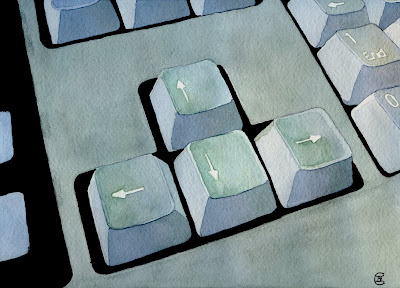Like so many New Yorkers - including most of my friends - I've rented storage space since moving here. It's amazing how big the storage business is in this city. Storage companies advertise everywhere, from billboards to subway cars. Some promise a free first month, free car services to and from one's storage building, and elaborate climate control systems. Since most of us live in tiny apartments with only two or three closets, one either lives with a clutter of boxes or rents storage. So like everyone else I had much of my previous life locked away in a Chelsea warehouse: books and more books, lots of heavy furniture, antique glassware and art pottery, an artificial Christmas tree and ornaments, part of my wife's huge yarn stash, and boxes of miscellaneous pots, pans, and household items.
If you live in New York you're familiar with the transformation of the Chelsea neighborhood over the last few years. The area has become famous for its art galleries and trendy restaurants. The warehouse in which my stuff was stored has gradually been converting floors to galleries. At the beginning of February we learned that the remainder of the building was being converted and all storage spaces had to be vacated by the 29th. Although we had talked about doing something with storage for eons, inertia allowed us to continue talking - without actually doing anything - until now.
Yesterday we rented a 16 ft. truck from Penske (with a good reputation for having trucks that won't leave you on the side of the road like U-Haul or Ryder), emptied the two storage rooms and loaded everything onto the truck, drove to Danbury, CT, and unloaded everything into my late mother-in-law's house, then drove the truck back to Manhattan and finally turned it in. It took us 11 hours to accomplish the whole ordeal. But I can joyfully say that for such an onerous task, we completed it without any glitches - no breakdowns, traffic jams, or packing nightmares. Yes, it was dirty, back-breaking work, made more difficult by the snow on the ground in Connecticut. We also had to take a convoluted route out of the City because so many of the turnpikes and parkways are restricted to passenger cars only. The truck routes can be quite tricky and involve much more city driving.
Naturally there was the expected bickering and grumbling at the beginning of the day, but once we started working my wife and I rediscovered some of that sense of teamwork one hopes to muster under such difficult circumstances. When we finally settled into bed - after hot showers and several Advil - we were congratulating ourselves for the day's efforts. (I vowed, however, that the next time we move anything, we're paying someone else to do the lifting! I'm too old to tackle this again.)





































